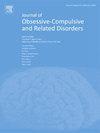Changing OCD-related feelings of disgust and contamination by cognitive restructuring and imagery modification (CRIM): Test and discussion of an online-application
Abstract
Contamination fears and disgust are maintaining factors for a range of mental illnesses. To date, there are relatively few evidence-based therapeutic strategies for directly modifying disgust although several studies have demonstrated that both cognitive and imagery strategies can be helpful in changing pathological disgust. Cognitive restructuring and imagery modification (CRIM) is a promising contamination and disgust-specific strategy that has been successfully used in the area of trauma-related disorders. An online study was conducted to investigate whether 102 participants with different levels of obsessive-compulsive symptoms would benefit from using CRIM for reducing disgust and contamination fear compared to a control intervention. Although the results showed no superiority of CRIM over the control intervention, this pre-post study design provides a good basis for a thorough discussion of the methodological difficulties in studying online interventions, especially those with a focus on obsessive-compulsive disorder (OCD). In addition, the implications for examining the effectiveness of strategies such as CRIM in an online environment are outlined.

 求助内容:
求助内容: 应助结果提醒方式:
应助结果提醒方式:


